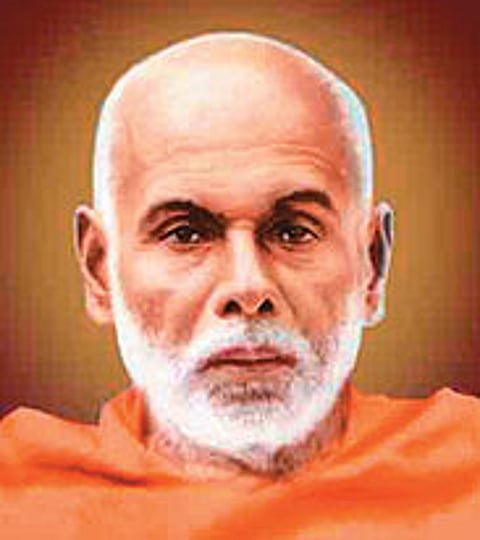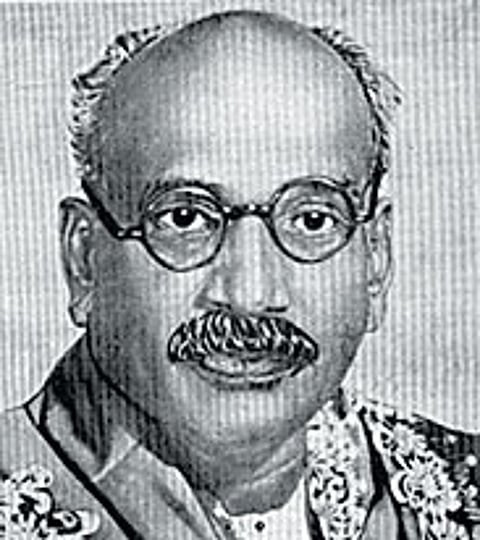The Dravidian movement is popularly characterised as the south Indian, non-Brahmin revolt against the social systems imposed by Brahminical Hinduism, mainly in the erstwhile Madras state. It is getting a serious relook in the contemporary context, being critically analysed by scholars and commentators, while its champions are preparing to celebrate the movement’s centenary—taking the release of the Non-Brahmin manifesto issued by Thegarayar in December 1916 as the formal beginning. A similar movement for liberation from exploitative Brahminism was initiated earlier by Jyotiba Phule in Maharashtra and sustained by Shahu Maharaj—leading up to the decisive revolt by Babasaheb Ambedkar in later years. The Dravidian movement, as it was espoused, was mainly a Tamil country movement and was an all-inclusive revolt against all forms of social and religious oppression and a move towards socialism and equality.
The Inner Grammar Of Dissent Lives
A century failed to give us any Dalit Tamil CM, sustain a single Dalit academic institution, or bring Dalit castes into the Dravidian fold
One way to evaluate this history is via the Dalit perspective—vis-à-vis the presence or absence of Dalits in the movement—since its essential grain is an emancipatory, anti-Brahminist one. Critics have of late been disparaging the movement citing a recent paradox: the assaults witnessed against Dalits in Tamil Nadu, mostly by backward castes supposed to have been inspired by the Dravidian movement. Some are even inclined to call the whole movement a hoax that failed to bring in social equality. And yet, the movement has been recognised as one of the greatest events in the social history of modern India and its leader Periyar was named the Prophet of New Age by UNESCO in June 1970. There are scores of appreciative studies on the movement and Periyar, both by Western and Indian scholars, and it just cannot be wished away as a disingenuous move for social control by middle castes.
But in last two decades, scholars have insisted on a critical analysis. Social scientists have developed parameters to contextualise and evaluate the achievements of a social movement. And the Dravidian ideology of protest too needs to pass the test. The atrocities perpetrated against Dalits by the very beneficiaries of the movement fits into a wider Indian paradox: Dalits are subjected to lynching not only in the Dravidian lands, the phenomenon is very severe even in the home state of Ambedkar. The evil of atrocities has spread to areas that were not known for such brutalities before.
It is exactly because of the humiliation and inhuman treatment meted out to Dalits by the dvijas using Manu dharma that Phule, Periyar, Ambedkar, Lohia and others critiqued Brahminism—not Brahmins—and we are obliged to examine the phenomenon closely. What we see at the outset is complementarity and overlap. One of the defenders of the Dravidian movement, N. Nandhivarman, general secretary of Dravida Peravai, says: “The Dalit movement that is on the rise at the dawn of the 21st century is a natural offspring of the Dravidian movement. Wherever human beings claim equality and seek equal rights, the spirit of the Dravidian movement will live there.” Yet, the Dravidian movement certainly has to ask the question to itself: how can it spawn discrimination against Dalits even though at its core it is an anti-caste, anti-Hindu movement.
The greatest miscarriage of the Dravidian movement appears to be in its inward-looking strategy; a programme of action limited to select pockets of space, time and families. There are several impediments to expanding the movement beyond Tamil-speaking areas. It was perhaps the end of the erstwhile Madras state—its reordering into four Dravidian-speaking linguistic states (Andhra Pradesh, Karnataka, Kerala, Tamil Nadu) in 1956—that got the movement divided. Perhaps it was at this juncture that the Dravidian spirit got fragmented and its specific sensibility did not go beyond Madras.
Reformers, broadly contemporary and of a kindred spirit, were spread through these territories: Tripuraneni, Thapi in Andhra; Narayana Guru, Ayyankali in Kerala; groups like Brahmanetara Parishat, Veerashaiva Sangh in Karnataka. All of them protested against Brahminical hegemony in the social, cultural and political life of people; however, they did not work under a single platform. In fact, they were part of the wider social ferment of the age, along with Iyothee Thass, Pandita Ramabai, Achutanand, Ambedkar, among others. In a real sense, they were the legatees, the next wave after the Bhakti saints such as Guru Ravidas, Guru Nanak, Tukaram, Kabir, Mira, Chokamela, Harichand Thakur and Nandanar, who tried to bring the devotee and God closer by removing the middleman Brahmin. Voices against ritualistic Hinduism, which gave unbridled supremacy to the Brahmin caste, that rose long back with Buddha.
Yet, the Dravidian movement did not go beyond its immediate regional needs and the issues of the backward classes. In retrospect, it appears that once energy was channelised collectively to fight for the First amendment to the Constitution—to uphold caste-based reservations in the south, based on the Communal order of the 1920s—it structured the movement in a way. At that time, in 1951, they could do it because the states were not yet formed and Periyar and Ambedkar were alive to lead the movement. But having won that battle, the Dravidian ideology seems to have been watered down to that of defending caste-based reservations. We cannot attribute this failure of the imagination to Periyar alone as internal bickering in the movement through successive splits—by Annadurai, and later Karunanidhi, and MGR—further abridged the scope of the Dravidian upsurge. They manifested Dravidianism through the anti-Hindi stir, the denouncing of north Indian festivities like the burning of Ravana and such like.



| Narayana Guru | Tripuraneni Ramaswamy | Jyotirao Phule | ||
The Dravidian canvas, though, goes much beyond this frame. The term ‘Dravida’, according to pundits, is a Sanskrit derivative of the name ‘Tamil’. Periyar had asserted that “there is only one language, and she is Tamil”. He went on to say, “It is my firm conviction that the Kural was especially created to demonstrate that the arts, culture, ethics and conduct of the Tamils were vastly different from and antithetical to those of Aryans.” In my Dravidian University Foundation day lecture, I too tried to go down word origins, citing Iravatham Mahadevan, Asko Parpola and others that the name ‘Harappa’ may itself be constituted of two Dravidian words, ‘Hara’ and ‘Appa’, typical to south India.
Therefore, the Dravidian movement should have been an all-inclusive, culturally diverse campaign to emphasise the historical significance of the first settlers in India. In fact, a careful reading of the movement shows that several diverse movements were integrated in it and Periyar emerges as a fulcrum. As Periyar himself agreed, the Dravidian nation is very old and he wanted to bring all the groups together. In fact, the self-respect movement, the anti-Brahmin movement, reservations, atheism, social reform—all are distinct genres of a large species. The Aryan-Dravidian binary in Indology and Dravidology, which could have yielded a rich focus, remained an orphan in academic discourse in the post-colonial era—an unfortunate occurrence typical to Indian scholarship, compared to the strength gathered by Palestinian, Jewish, African identity movements based on common threads of links of blood, genetics, language, culture and history.
Nevertheless, India’s contemporary political situation—the resurgence of Brahminical control, an ironic dominance of the levers of power when seen against their 1931 census figure of three per cent population—indicates that the raison d’etre of the Periyarist line is not dead and the Dravidian movement will re-emerge. The census data on OBC numbers and caste-wise socio-economic indices, being religiously hidden away from the public eye like a temple treasure, have the potential to trigger the next non-Brahmin movement in the country once they are accessed. Yet, the clamour of upwardly mobile backward castes for more social space and reservation benefits will create a drag in the process and this time it will have to be managed more deftly.
The last 100 years of the Dravidian movement failed the Dalits in some crucial senses. Any new movement for an anti-caste, anti-religious, socialistic and egalitarian idea has to encode the ideology of Ambedkar within itself to succeed. A century failed to give us a single Dalit Tamil chief minister, or to sustain any Dalit academic institution, or to bring Dalit castes like the Pallans and Parayans into the Dravidian fold. The result: two separate Dalit political formations, led by Dr K. Krishnaswamy and Tirumavalavan. And yet both formations, inspired by an Ambedkarite ideology, include within their DNA strong streaks of the Dravidian movement tenets, especially the deep linguistic identification with Tamil.
We do wish that all Indians, whose modern destiny was framed under Ambedkar’s Constitution, respect diversity and pluralism and help create conditions of live and let live. The Dravidian movement had once initiated a paradigm shift in our social relations. It might stumble and fall, struggle to cope with the distortions, even crack under the weight of its own limitations in the short run. But its spirit will never vanish as long as discrimination, indignity and inhumanity are perpetuated in the name of caste, religion, colour, language and culture. Then again, in this century, it is Ambedkar’s turn to win these rights for all oppressed.
(The writer is former vice-chancellor, Dravidian University, Kuppam)